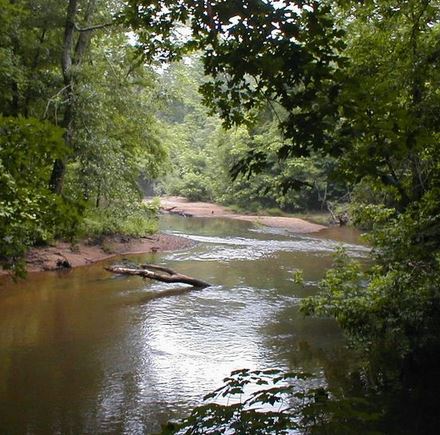The Alabama River is a significant waterway that flows through the heart of Alabama, playing a crucial role in the state’s history, ecology, and economy. Stretching over 318 miles, the river is not only a natural resource but also a vital part of the region’s cultural heritage. In this article, we’ll explore the origins, geography, ecological importance, and the role of the Alabama River in Alabama’s history and economy.
Geography and Origins
The Alabama River is formed by the confluence of the Coosa and Tallapoosa rivers near the city of Montgomery, the capital of Alabama. From there, it winds its way southwestward through the state, passing through several counties, including Lowndes, Wilcox, Dallas, and Monroe, before merging with the Tombigbee River to form the Mobile River. This waterway eventually empties into Mobile Bay and the Gulf of Mexico.
The river’s drainage basin covers approximately 22,800 square miles, making it one of the most extensive river systems in the southeastern United States. The river’s watershed includes diverse landscapes, from forested uplands to fertile floodplains, supporting a wide range of plant and animal life.
Ecological Importance
The Alabama River is an essential habitat for a variety of species, some of which are rare or endangered. The river’s diverse ecosystems include wetlands, bottomland hardwood forests, and aquatic habitats that support fish, birds, and other wildlife.
One of the most notable species in the Alabama River is the Gulf sturgeon, a large, ancient fish that migrates between freshwater and saltwater. The river is also home to several species of freshwater mussels, many of which are endemic to the region and contribute to the river’s ecological health.
Wetlands along the river play a critical role in water purification, flood control, and providing habitat for migratory birds. The Alabama River’s floodplains are also crucial for maintaining the region’s biodiversity, supporting species that rely on these habitats for breeding and feeding.

Historical Significance
The Alabama River has been a central part of the region’s history for thousands of years. Native American tribes, including the Creek Nation, relied on the river for transportation, trade, and sustenance long before European settlers arrived.
During the 19th century, the Alabama River became a vital transportation route for the cotton trade, which was the backbone of Alabama’s economy. Steamboats traveled up and down the river, carrying cotton and other goods to markets in Mobile and beyond. The river facilitated the growth of towns and cities along its banks, contributing to the state’s economic development.
In the Civil War, the Alabama River played a strategic role, with several battles and skirmishes taking place near its banks. The river’s importance as a transportation route made it a target for Union forces, who sought to disrupt Confederate supply lines.
Economic Impact
Today, the Alabama River continues to be an essential resource for the state’s economy. It supports commercial navigation, recreational activities, and water supply for agriculture and industry.
The river is part of the Tennessee-Tombigbee Waterway, a significant commercial navigation route that connects the interior of the United States with the Gulf of Mexico. Barges carry goods such as timber, coal, and agricultural products along the river, contributing to the state’s economy.
Recreational activities, including fishing, boating, and hunting, are popular along the Alabama River. The river’s scenic beauty and rich biodiversity attract tourists and outdoor enthusiasts, supporting local businesses and contributing to the state’s tourism industry.
Conservation and Challenges
Despite its importance, the Alabama River faces several environmental challenges. Pollution from agricultural runoff, industrial discharges, and urban development threatens the river’s water quality and the health of its ecosystems. Habitat loss and alteration due to dam construction and river channelization have also impacted the river’s natural flow and biodiversity.
Conservation efforts are underway to protect and restore the Alabama River. Organizations and government agencies are working to improve water quality, restore habitats, and promote sustainable land use practices in the river’s watershed. These efforts are crucial for preserving the river’s ecological integrity and ensuring its continued importance to Alabama’s people and economy.
The Alabama River is more than just a waterway; it is a lifeline for the state of Alabama. From its ecological richness to its historical significance and economic value, the river plays a vital role in the life of the state. Protecting and preserving this natural resource is essential for future generations to continue benefiting from its many gifts.
